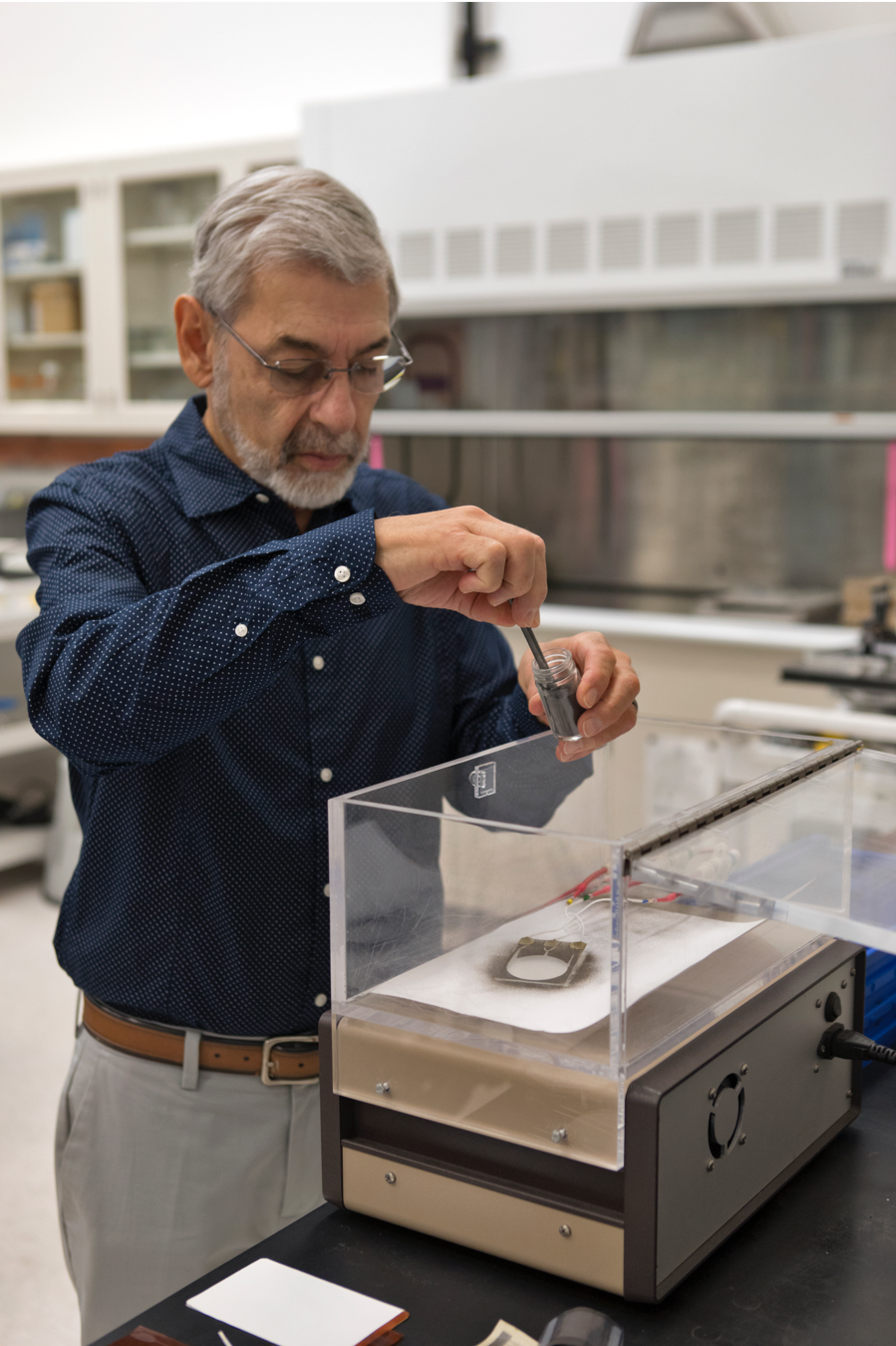
Inventor Carlos Calle working on his technology at NASA's Kennedy Space Center.
Please tell us about yourself.
I received my Ph.D. in nuclear physics from Ohio University in 1984. I came to NASA in 1999 after an academic career as a college professor in Virginia. I have published over 150 scientific papers and 5 physics books, which have been translated into seven languages. The most recent book, Electrostatic Phenomena on Planetary Surfaces, was published in 2017 by Morgan & Claypool Publishers for the Institute of Physics Books series.
At KSC, I lead the Electrostatics and Surface Physics Laboratory, which I founded in 2000 to assist in the detection, mitigation, and prevention of electrostatic discharges on spaceflight hardware and ground support equipment. The laboratory also develops technology in support of lunar exploration missions. One such technology is the Electrodynamic Dust Shield (EDS).
What does this invention do?
The EDS is an active coating that is able to remove dust from the surfaces of solar panels, cameras, optical systems, and equipment used in the exploration of the moon and eventually Mars. The technology uses electric fields to remove dust already deposited on surfaces or to prevent dust accumulation on clean surfaces without visible damage to the surface.
What problem does this technology solve?
The EDS was developed to mitigate dust accumulation on surfaces, “one of the greatest inhibitors to a nominal operation on the Moon,” as Gene Cernan wrote in the Apollo 17 Technical Debrief. He added that “we can overcome other physiological or physical or mechanical problems except dust.” Dust levitated from the lunar surface by rovers, landers, and other exploration activities can deposit on solar panels or thermal radiators, diminishing their efficiency.
Dust can also damage camera lenses, optical systems, visors in astronaut helmets, viewports and windows in habitats, as well as equipment.
Who else might benefit from this technology? What other applications do you envision?
Vehicles and equipment operating in dusty conditions anywhere should benefit from this technology.
Do you have any future plans to continue development of this technology?
We are preparing a payload to demonstrate the technology on the International Space Station (ISS) as part of the Materials Space Station Experiment (MISSE), a facility attached to the exterior of ISS. The EDS will be powered by its compact and lightweight electronics control 10 times a day. Operation and exposure to the LEO space environment for a year will validate the technology for lunar missions.
The wake side of the MISSE Flight Facility approximates the electrostatic environment on the dayside of the lunar surface. Daily passage of ISS near the auroral region will expose the EDS to an electrostatic environment that approximates that of the dark side of the moon.
Is there anything else you want us to know about your innovation?
We are also developing applications of this technology to support the In Situ Resource Utilization work for lunar exploration.
Whom should I contact if I want to know more about this technology?
KSC’s Technology Transfer Officer David Makufka.
Learn more about this technology here.



